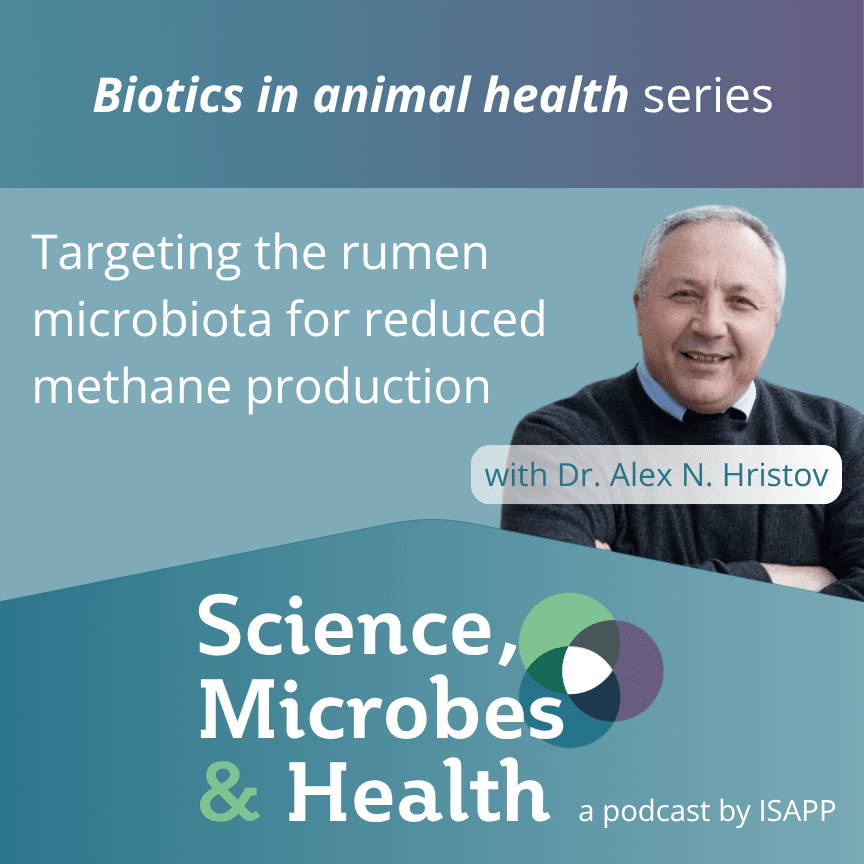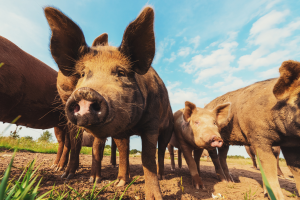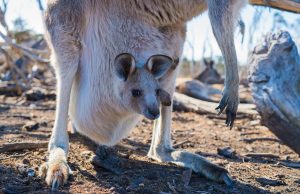Targeting the rumen microbiota for reduced methane production, with Prof. Alex Hristov PhD

Listen to the Podcast:
Podcast: Play in new window | Download
Subscribe: Apple Podcasts | Spotify | RSS
This episode features Prof. Alex Hristov PhD from Penn State University (USA) talking about the microbiota of ruminants and how it can be targeted for reduced methane production. The rumen (pre-stomach area) of cows and other animals contains microorganisms that digest the feed before it enters the rest of the gastrointestinal tract. Hydrogen is produced to inhibit further fermentation of the feed, and this hydrogen is rapidly converted to enteric methane, which is emitted by the animal – accounting for a large proportion of methane emissions that contribute to global warming. Several approaches exist for targeting the rumen microbiota with the aim of reducing methane emissions. Some feed additives, including one recently approved by regulators in the US, can reduce enteric methane by around 30% and appear safe for the animal. Vaccines against the methane-producing archaea in the rumen are another potential approach suitable for grazing livestock. Direct microbials have also been advanced. Many other sources of methane emissions exist besides livestock, but significantly reducing the methane production in the livestock industry could have a major positive impact on global warming. Feed additives for now are the leading strategy, and adoption of existing solutions in multiple places is critical. This episode is part of a series on the role of biotics in animal health.
Episode abbreviations and links:
- Paper on feed additive for reducing methane emissions: An inhibitor persistently decreased enteric methane emission from dairy cows with no negative effect on milk production
- Review paper on reducing methane emissions via feed additives: Advances in nutrition and feed additives to mitigate enteric methane emissions
- Announcement of FDA approval of feed additive: Elanco Announces FDA Has Completed Review of Bovaer®, First-in-Class Methane-Reducing Feed Ingredient, for U.S. Dairy Industry
- Study showing microorganisms transferred from the rumen of one animal to another: Successful transfer of DHP-degrading bacteria from Hawaiian goats to Australian ruminants to overcome the toxicity of Leucaena
- Estimation of methane emissions from bison versus agricultural animals: Historic, pre-European settlement, and present-day contribution of wild ruminants to enteric methane emissions in the United States
Additional resources:
ISAPP blog post: Microbiota from a surprising source—baby kangaroos—might decrease cattle methane production
About Prof. Alex Hristov PhD:
Dr. Alexander N. Hristov is a Distinguished Professor of Dairy Nutrition in the Department of Animal Science at The Pennsylvania State University. He has a Ph.D. in Animal Nutrition from his native Bulgaria. Hristov has worked at the USDA-ARS Dairy Forage Research Center in Madison, WI, the Ag Canada Research Center in Lethbridge, AB, was on the faculty at the Department of Animal and Veterinary Science, University of Idaho from 1999 to 2008 and is at Penn State since 2008. Hristov’s main research interests are in the areas of mitigation of nutrient losses and gaseous emissions from dairy operations and protein and amino acid nutrition of dairy cattle. He has published over 220 peer-reviewed journal papers, books, and book chapters.



